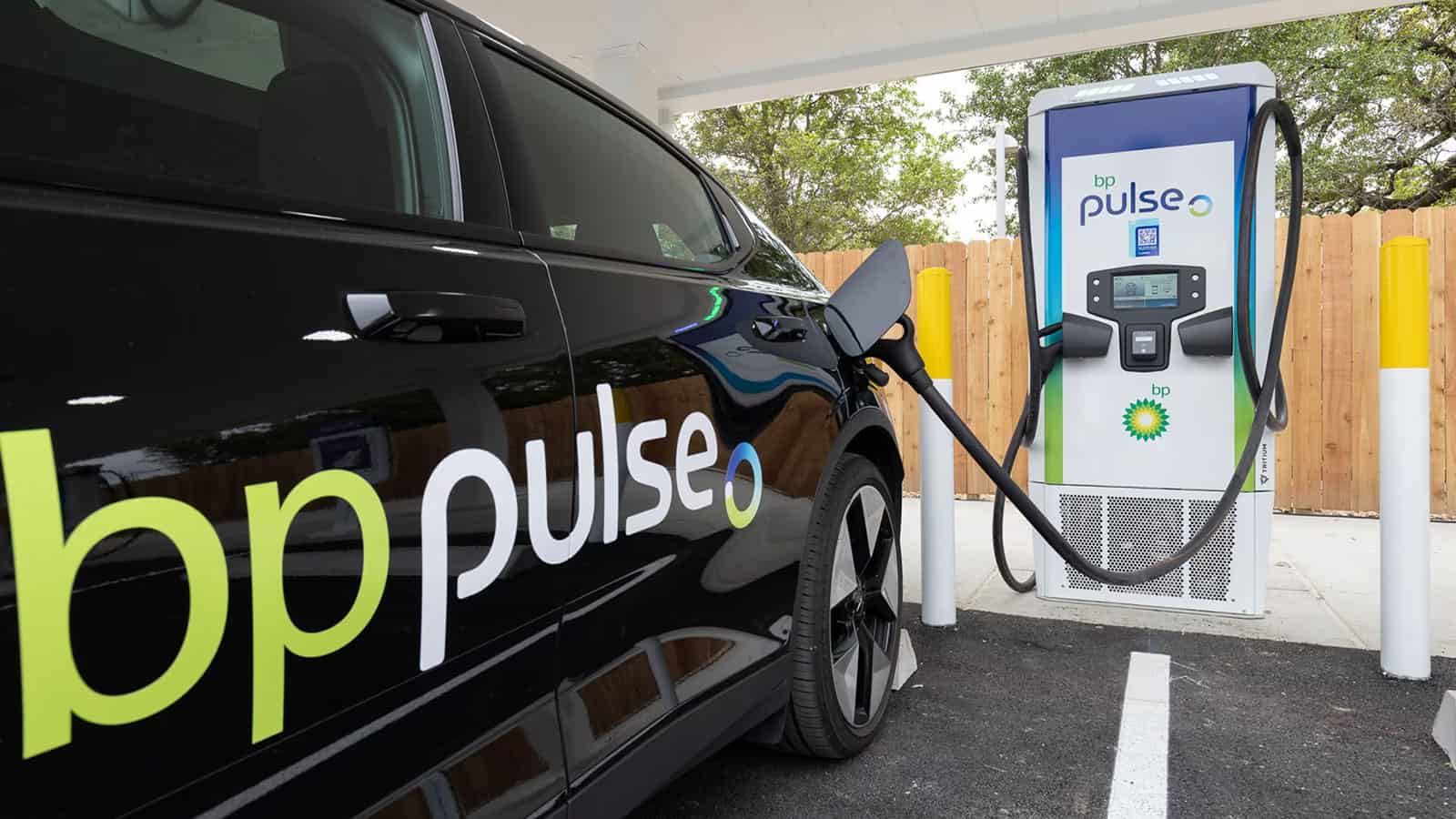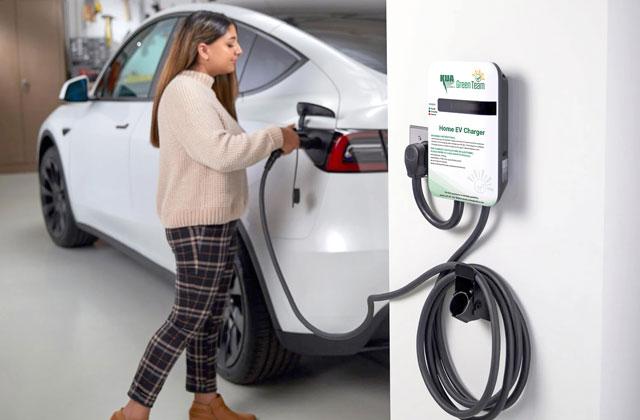What’s Driving the Growth of EV Infrastructure? Buy EV Charging news for Key Updates
What’s Driving the Growth of EV Infrastructure? Buy EV Charging news for Key Updates
Blog Article
Top EV Charging News: Key Updates on Infrastructure and Technology

Recent Developments in Fast-Charging Innovation

Additionally, advancements in battery modern technology, consisting of improved thermal monitoring systems and higher energy thickness batteries, complement fast-charging capabilities. These advancements mitigate the danger of battery destruction during quick charging, making certain longevity and efficiency for EV owners.
Furthermore, the integration of smart charging solutions is enhancing customer experience, allowing real-time surveillance and dynamic pricing versions. EV Charging news. This adaptability permits motorists to maximize charging expenses and times based on grid need
As car manufacturers remain to buy fast-charging networks, the cooperation in between market stakeholders is critical. Collaborations in between charging terminal suppliers and automobile makers are leading the way for extensive coverage, ultimately fostering a more robust EV environment. These innovations are pivotal in sustaining the shift to lasting transport.
Government Initiatives for Billing Development
Federal government initiatives play a vital function in the growth of electric car (EV) charging facilities, helping with the change to sustainable transportation. Different government and state programs are being implemented to enhance billing ease of access, minimize the monetary worry on consumers, and advertise the adoption of electrical automobiles.
Notably, the united state federal government has alloted substantial financing through the Framework Investment and Jobs Act, which allocates $7.5 billion for EV charging network development throughout the country. This funding is focused on deploying countless brand-new billing terminals, specifically in underserved locations, consequently resolving range anxiousness amongst prospective EV buyers.
Additionally, numerous states are enacting legislation to improve the permitting process for billing terminal setups, which is critical for speeding up implementation. Motivations such as tax debts and rebates for both consumers and businesses are additionally being presented to urge the installation of billing framework.
Additionally, public-private collaborations are significantly coming to be a focus, leveraging exclusive investment to enhance government funding. These efforts highlight a collaborative method essential for building a reliable and thorough EV billing network, inevitably adding to a greener and more sustainable future.
Innovative Battery Solutions Enhancing Efficiency
Reinventing the landscape of electric car (EV) technology, innovative battery remedies are significantly improving performance and performance. Breakthroughs in battery chemistry, particularly with lithium-sulfur and solid-state batteries, are resulting in enhanced energy density, which enables longer varieties and faster billing times. These brand-new battery types have the prospective to surpass typical lithium-ion batteries by offering greater abilities while lowering weight, thereby improving general vehicle effectiveness.
Moreover, growths in battery management systems (BMS) are enhancing power use and expanding battery life expectancy. Intelligent algorithms keep track of battery health and performance, enabling real-time changes to billing and releasing procedures. This not just enhances the efficiency of the battery yet also ensures an extra sustainable and reliable power source for EVs.
Additionally, the combination of recycling technologies is resolving the ecological influence of battery production and disposal. Technologies in second-life applications for EV batteries are promoting their usage in power storage space systems, contributing to a circular economic situation.
As these ingenious battery solutions remain to develop, they guarantee to transform the EV market, making electric lorries much more easily accessible and attractive to a wider audience while sustaining international sustainability goals.

Collaboration Between Automakers and Charging Networks
Acknowledging the vital requirement for a durable charging framework, car manufacturers are significantly working together with billing network carriers to enhance the EV possession experience (EV Charging news). These partnerships aim to create a seamless billing environment that profits customers and supports the change to electric automobiles
Major automotive brands are signing up with pressures with well-known billing networks to expand their billing terminal coverage, making sure motorists have accessibility to practical and dependable billing choices. Collaborations with networks like ChargePoint and Electrify America allow automakers to incorporate billing services straight into their lorries' navigating systems, leading customers to the nearest terminals and giving real-time accessibility updates.
Additionally, these partnerships frequently result in the growth of fast-charging modern technologies that substantially lower the time required to charge an EV. redirected here By merging sources and knowledge, automakers and billing networks can introduce much faster, creating services that satisfy the expanding demand for electrical wheelchair.
On top of that, joint initiatives may published here also result in even more standardized charging protocols, which can alleviate consumer confusion and promote more comprehensive EV fostering. Generally, these tactical partnerships are critical in constructing a efficient and user-friendly charging facilities that fulfills the needs of an increasing electric lorry market.
Challenges Dealing With EV Charging Framework
As the electric car market remains to expand, several obstacles are surfacing that hinder the development of a detailed billing infrastructure. Among the primary barriers is the insufficient variety of charging terminals, especially in underserved and rural urban locations. This space develops variety anxiety among prospective EV buyers, deterring them from making the button.
Additionally, the lack of standardization in billing modern technology makes complex the framework landscape. Variants in plug types and charging speeds can develop complication for customers and increase functional complexities for charging network drivers. In addition, the combination of billing stations right into existing electric grids positions significant obstacles. Numerous areas face ability constraints, requiring significant investments in grid upgrades to suit increased demand.
Another pushing issue is the high expense connected with the installment and maintenance of charging stations, which can be a barrier for both public entities and personal companies. Regulative difficulties and zoning restrictions can postpone the implementation of billing framework, impeding progression in increasing crucial solutions. Addressing these difficulties will certainly be critical for cultivating a durable EV ecological community that supports the shift to sustainable transport.
Verdict
Finally, the recurring innovations in useful reference EV charging technology, supported by significant federal government initiatives and cutting-edge battery services, are important for the development and effectiveness of electrical car framework. Cooperations between car manufacturers and billing suppliers even more boost terminal insurance coverage, attending to the expanding need for obtainable billing choices. Despite challenges that linger within the EV charging landscape, these developments symbolize a favorable trajectory in the direction of a more efficient and lasting electrical lorry ecosystem.
Innovations in charging infrastructure have led to the development of ultra-fast battery chargers capable of providing up to 350 kW of power, significantly lowering billing times. Variations in plug kinds and billing speeds can develop complication for users and increase functional intricacies for charging network operators.In final thought, the recurring advancements in EV charging innovation, supported by significant government campaigns and innovative battery services, are crucial for the growth and efficiency of electric automobile framework. Cooperations in between automakers and billing companies better improve terminal protection, resolving the growing need for available billing choices. Despite challenges that linger within the EV billing landscape, these growths indicate a favorable trajectory in the direction of an extra lasting and reliable electric car environment.
Report this page